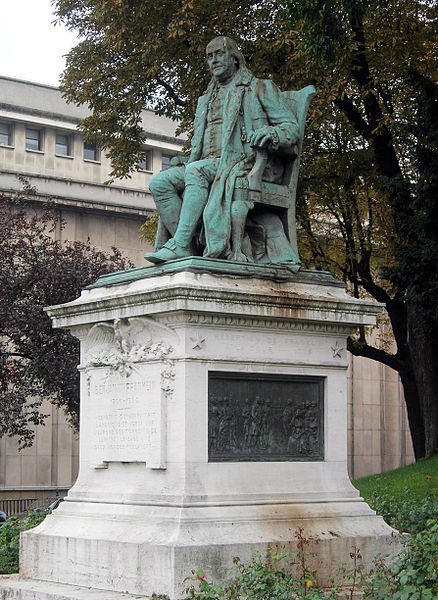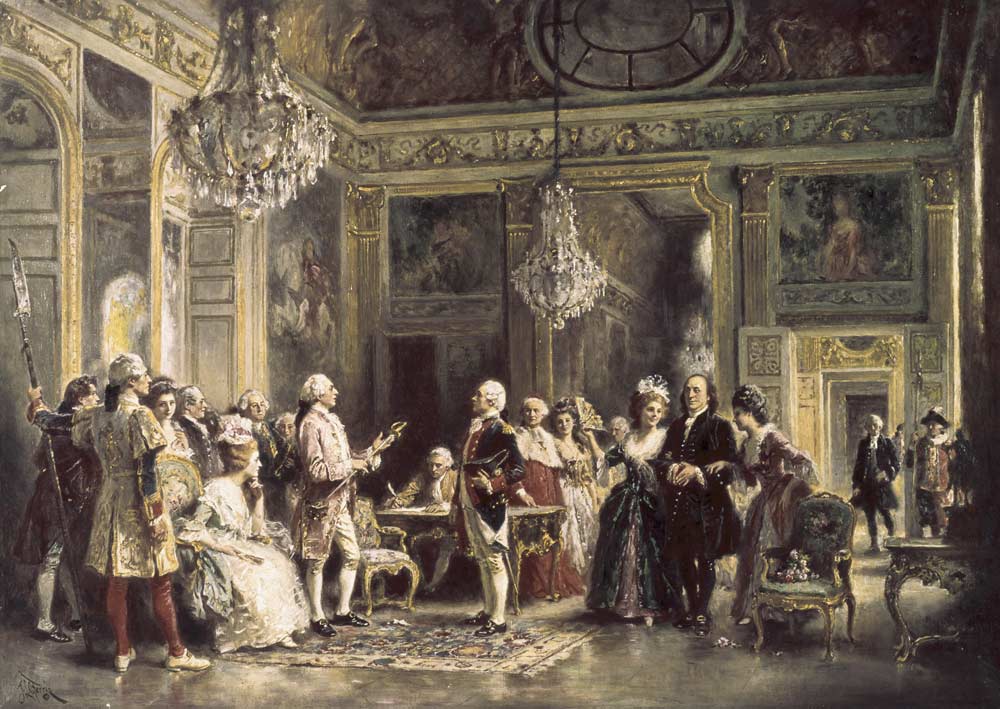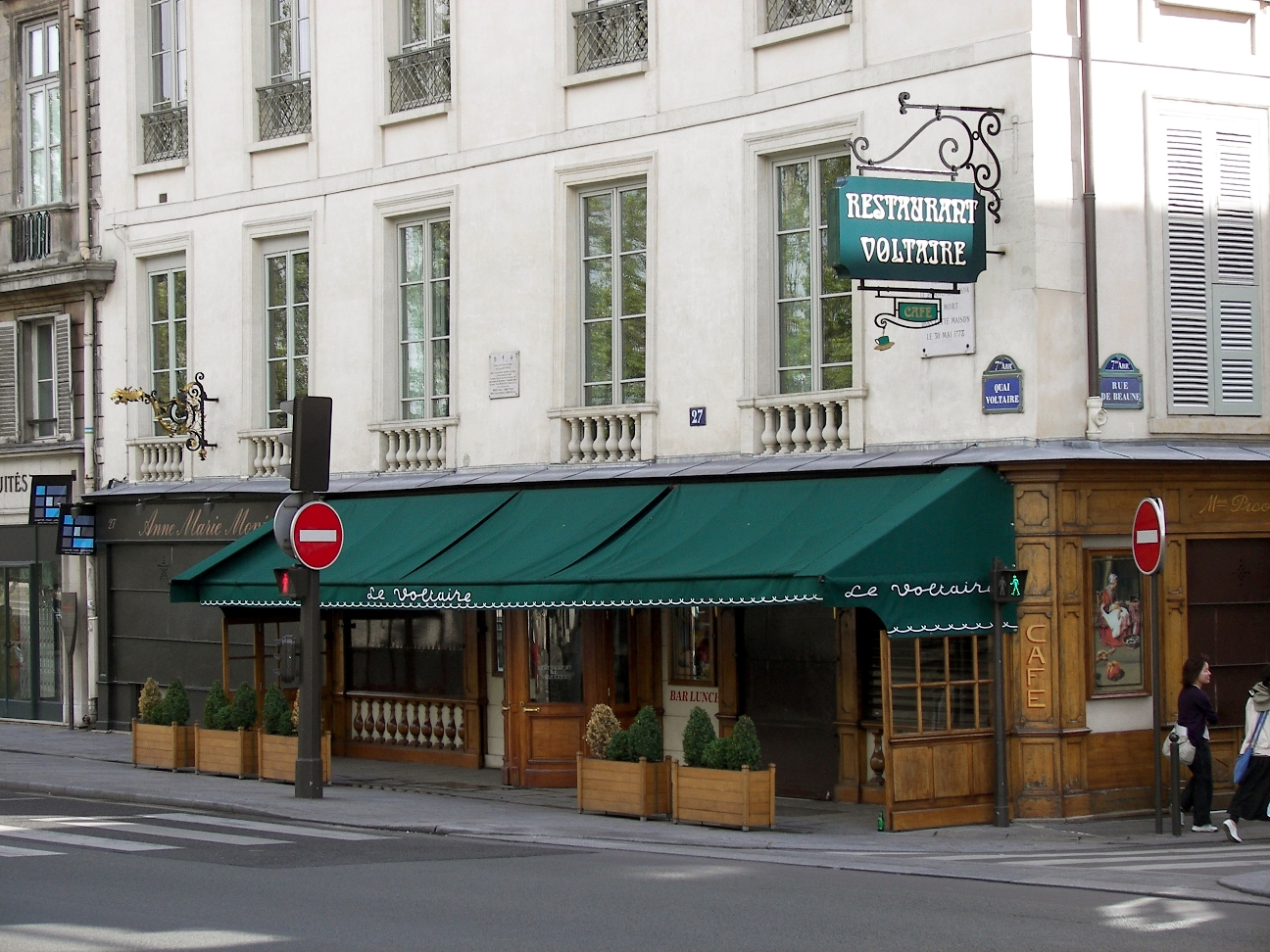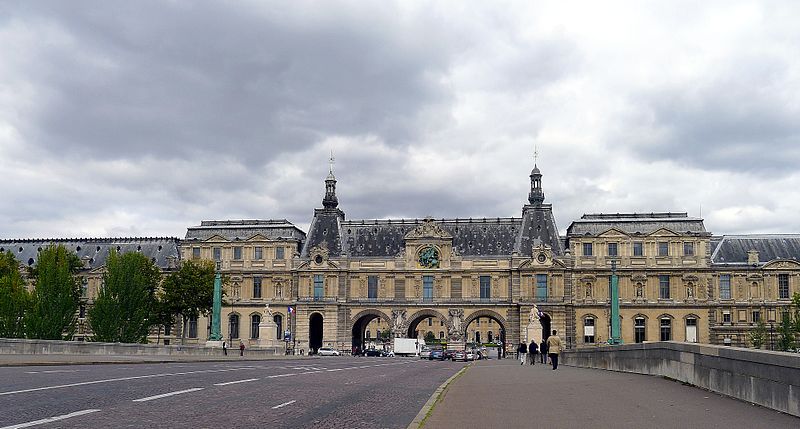
Joseph-Siffrein Duplessis (1725–1802)
Portrait of Benjamin Franklin, 1778
London, National Portrait Gallery

John J. Boyle (1851/52-1917)
Statue of Benjamin Franklin Bronze, 1898
Paris, Trocadéro,
Inscription: This genius who frees America and pours torrents of Light over Europe ! The Wise wanted by two worlds...
The Most Famous Man in the World
From these gardens on December 1, 1783, Benjamin Franklin watched one of the first manned flights of a hot-air balloon, built by the Montgolfier brothers. (The actual takeoff spot was at the entry to the gardens by Place de la Concorde, which we can't see from here.) Franklin's interest in this momentous event was twofold: first, he was a member of the Loge des Neuf Sœurs (the Lodge of the Nine Sisters, named after the nine muses), a French Masonic lodge founded in 1776 and instrumental in garnering French support for the American Revolution. One of the Montgolfier brothers, Jacques-Etienne, was a member of this lodge. (Isn't it interesting that both the hot-air balloon and the airplane were pioneered by brothers?) Other celebrated lodge members included the philosopher Voltaire, naval hero John Paul Jones, sculptor Jean-Antoine Houdon and Dr. Joseph-Ignace Guillotin (not, as is often thought, the inventor of the guillotine, but its main promoter as a quick and thus humane means of execution). We'll hear more about these famous Freemasons later in the tour.
The second and probably more important reason for Franklin's interest in the balloon launch was his own scientific vocation. After all, he was known in France as "the man who wrested the lightening from heaven." In fact, he and his scientific exploits (among other achievements) were so famous that he grew tired of posing for painters, sculptors, medal makers and manufacturers of all manner of knickknacks that wound up bearing his likeness (snuff boxes, walking sticks, matchboxes, teacups, candy dishes and more); after lamenting to his sister that his face was "as familiar as the man in the moon," he finally suggested that those looking to exploit his image merely draw inspiration from one of his favorite effigies, a bust by fellow lodge member Jean-Antoine Houdon.
While Paris was the playground where Franklin practiced his charming "pillow French" and impressive dinner-table diplomacy, many of his most avid admirers – and greatest challenges – were found further to the west: at the Château de Versailles, where he put on a performance that some called reverse snobbery, others cunning strategy; his biographer Stacy Schiff hailed it as a great improvisation (that is the title of her book, whose subtitle is Franklin, France, and the Birth of America). Whatever we call it, a performance it was. There he stood, in his signature marten-fur frontiersman's cap, a simple printer by trade, surrounded by opulence and decadence, pomp and protocol, petitioning one of the most powerful absolute monarchies in the world for heaps of money to fight another of the most powerful absolute monarchies in the world. And he had them at Bonjour! Marie Antoinette was a fan: Before the gout-riddled octogenarian left France in 1785, the queen had a special carriage made in which he could recline all the way to his waiting boat. The ladies of the court were also fans: They had their wigs done up to resemble his headwear. But, according to Ms. Schiff, his outward confidence and ease did battle at times with his inward nervousness and the quite understandable question he asked himself: What is the 10th son of a candle maker doing here?

Jean Leon Gerome Ferris (1863-1930)
John Paul Jones & Benjamin Franklin at Louis XVI's Court


